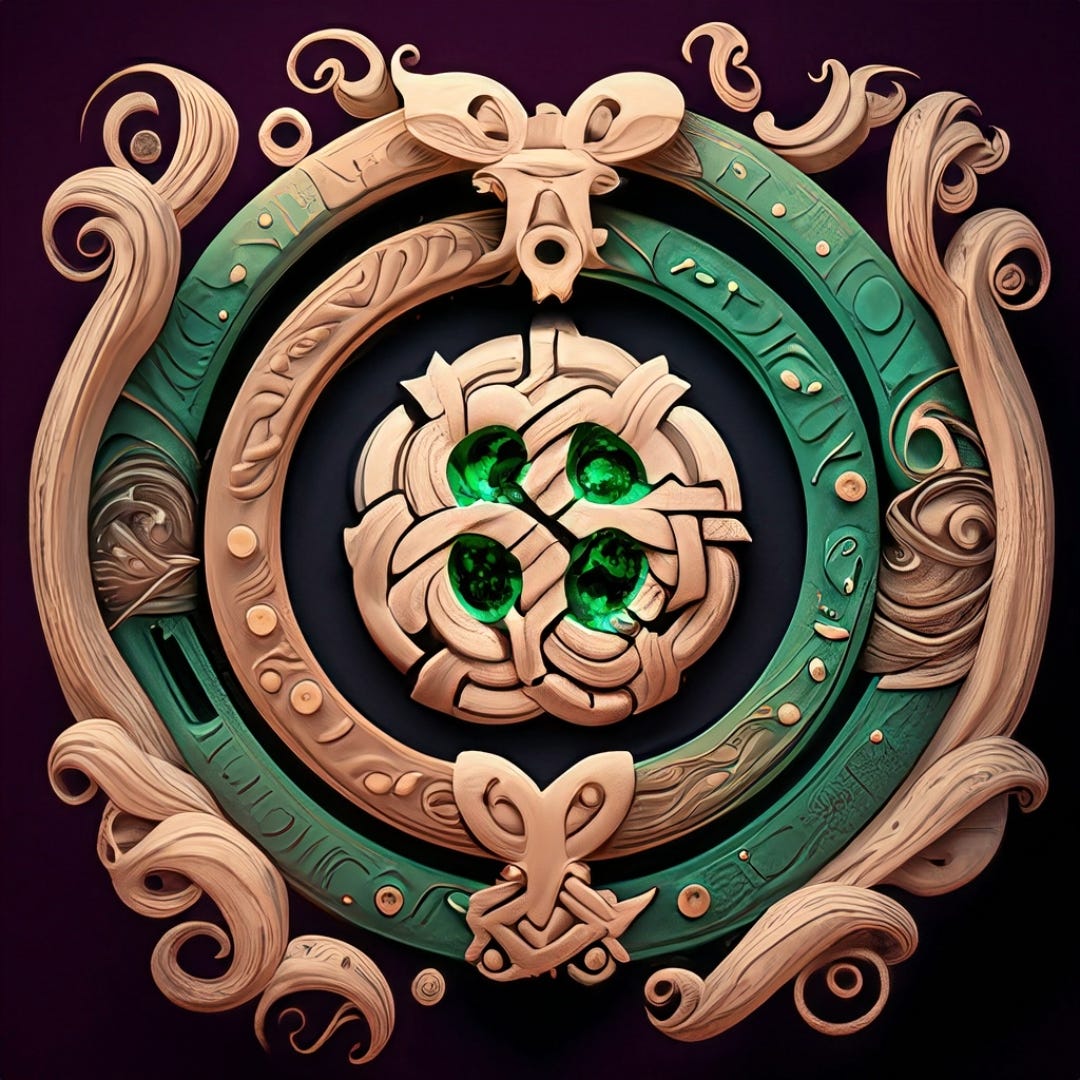Exploring the Mythological Cycle of Irish Mythology
Irish mythology is a treasure trove of ancient tales, weaving together the mystical, the heroic, and the divine. At its heart lies the Mythological Cycle, a collection of myths and legends that delve into the origins of Ireland, its gods, and its legendary figures. These stories, passed down through generations, are not merely entertainment; they are a reflection of the Irish people's identity, values, and cultural heritage.
Irish mythology is deeply ingrained in the oral tradition of the Celtic people. For centuries, these stories were passed down from generation to generation through epic poems, sagas, and folklore. While some details may vary from one telling to another, the core themes and characters remain consistent, showcasing the enduring power of these ancient tales.
The Tuatha Dé Danann: Central to the Mythological Cycle are the Tuatha Dé Danann, a race of godlike beings believed to be descended from the goddess Danu. According to legend, they arrived in Ireland in a great mist, bringing with them four treasures: the Sword of Nuada, the Spear of Lugh, the Stone of Fal, and the Cauldron of Dagda. These treasures symbolize the power and authority of the Tuatha Dé Danann as the rulers of the land.
Key Figures:
Nuada: Nuada, also known as Nuada Airgetlám (Nuada of the Silver Hand), is a prominent leader of the Tuatha Dé Danann. Despite losing his hand in battle, he remains a formidable figure, often depicted as the king of the gods.
Lugh: Lugh is another significant figure in Irish mythology, renowned for his prowess in battle, his skill as a craftsman, and his wisdom as a king. He is often hailed as a hero and a symbol of leadership.
The Morrigan: The Morrigan is a mysterious and enigmatic goddess associated with war, fate, and sovereignty. She is often depicted as a shape-shifter, appearing in the form of a crow or raven.
The Dagda: The Dagda is a powerful and benevolent god associated with fertility, agriculture, and abundance. Despite his imposing appearance, he is portrayed as a caring and jovial figure, beloved by the Tuatha Dé Danann.
Brigid: Brigid is a goddess of fire, poetry, and healing, revered as a patroness of creativity and craftsmanship. She embodies warmth, protection, and inspiration, making her a beloved figure in Irish folklore.
Dian Cécht: Dian Cécht is a healer and physician among the Tuatha Dé Danann, renowned for his mastery of medicine and his ability to heal wounds and injuries. He embodies wisdom and compassion, caring for the health and well-being of his people.
Major Myths and Stories:
The Second Battle of Mag Tuired: This epic saga recounts the conflict between the Tuatha Dé Danann and their rivals, the Fomorians, for control of Ireland. Filled with magical battles and heroic deeds, it is one of the central myths of the Mythological Cycle.
The Children of Lir: A poignant tale of love, loss, and transformation, The Children of Lir follows the plight of a king and his four children, who are cursed to live as swans by their jealous stepmother.
The Wooing of Étaín: This myth explores the complex relationships between mortals and supernatural beings, as a mortal hero, Ailill, vies for the affections of the fairy princess Étaín, much to the chagrin of the Fomorian king Midir.
The Cattle Raid of Cooley: While primarily associated with the Ulster Cycle, this epic saga also features characters and themes from the Mythological Cycle. It follows the exploits of the hero Cú Chulainn as he defends Ulster against the forces of Connacht.
Themes and Symbolism:
Divine Intervention: Many myths of the Mythological Cycle feature direct involvement from gods and goddesses, underscoring the interconnectedness of the divine and mortal realms.
The Otherworld: A recurring motif in Irish mythology, the Otherworld represents a supernatural realm inhabited by gods, spirits, and mythical creatures. It serves as a source of wonder and mystery, accessible only to those with the knowledge or magical abilities.
Fate and Destiny: Themes of fate and destiny are pervasive throughout the Mythological Cycle, highlighting the belief in a predetermined course of events that cannot be altered.
Sovereignty and Kingship: The concept of sovereignty and the divine right of kings are central themes, reflecting the importance of leadership and governance in ancient Celtic society.
Legacy and Influence: The myths and legends of the Mythological Cycle continue to resonate with audiences worldwide, inspiring countless works of literature, art, and music. Their timeless themes and enduring characters serve as a testament to the enduring power of myth and legend, ensuring that the legacy of Irish mythology will live on for generations to come.
The Mythological Cycle of Irish mythology offers a captivating glimpse into the origins of Ireland and its people, as well as the supernatural forces that shaped their world. Through its epic sagas, heroic deeds, and timeless themes, it continues to captivate and inspire audiences, serving as a testament to the enduring power of myth and legend.


